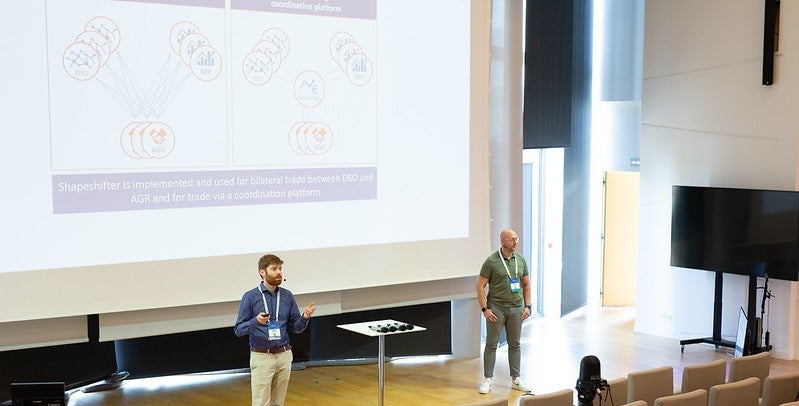LF Energy Summit 2023 Recap: Unleashing Energy Flexibility: Shapeshifter’s Universal Flex Trading Protocol
In a session at LF Energy Summit 2023, Robben Riksen and Daniel Wich took the virtual stage to shed light on the groundbreaking potential of flexibility trading using the LF Energy Shapeshifter protocol (video follows below). The duo, representing GOPACS and Enexis respectively, delved into the urgency of addressing grid capacity challenges in the midst of a dynamic energy transition. Let’s explore the key takeaways from their presentation.
Shapeshifter: Empowering the Energy Grid of Tomorrow
The heart of the presentation was the introduction of Shapeshifter, a revolutionary universal flex trading protocol. Born out of LF Energy, Shapeshifter aims to tackle the complex issues arising from the shifting energy landscape. With the increasing decentralization of energy production, rising simultaneity in consumption, and the growth of electrification through EVs and heat pumps, traditional grid capacities are being stretched to their limits.
The Flexibility Value Chain: Bridging the Gap
Riksen and Wich emphasized the crucial role Shapeshifter plays in the flexibility value chain. Aggregators offer flexibility, while grid operators can request it in real-time. This symbiotic exchange helps manage grid congestion, ultimately leading to better utilization of existing infrastructure. Use cases highlighted the potential of Shapeshifter in managing EV charging and grid capacity, promising a more resilient and adaptable energy grid.
Real-World Implementation: Enexis Leading the Way
The duo provided a glimpse into the real-world implementation of Shapeshifter, showcasing how Enexis leveraged the protocol to communicate with charge pools. By facilitating effective communication, Shapeshifter successfully managed grid congestion and flexibility, laying the foundation for broader applications.
Open Source Collaboration: Building a Brighter Future
Riksen and Wich highlighted the importance of open source collaboration in shaping the future of energy flexibility. Seeking feedback from implementers, they aim to improve the Shapeshifter protocol and documentation to make it more accessible. This move is expected to lower entry barriers, encourage wider participation, and foster a more innovative energy market.
Q&A Insights: Addressing Complexity
The session also touched on some intriguing questions, including discussions on pricing models, different contract types, and the interaction of capacity management with ancillary services. These insights provided a deeper understanding of the intricacies involved in implementing Shapeshifter effectively.
